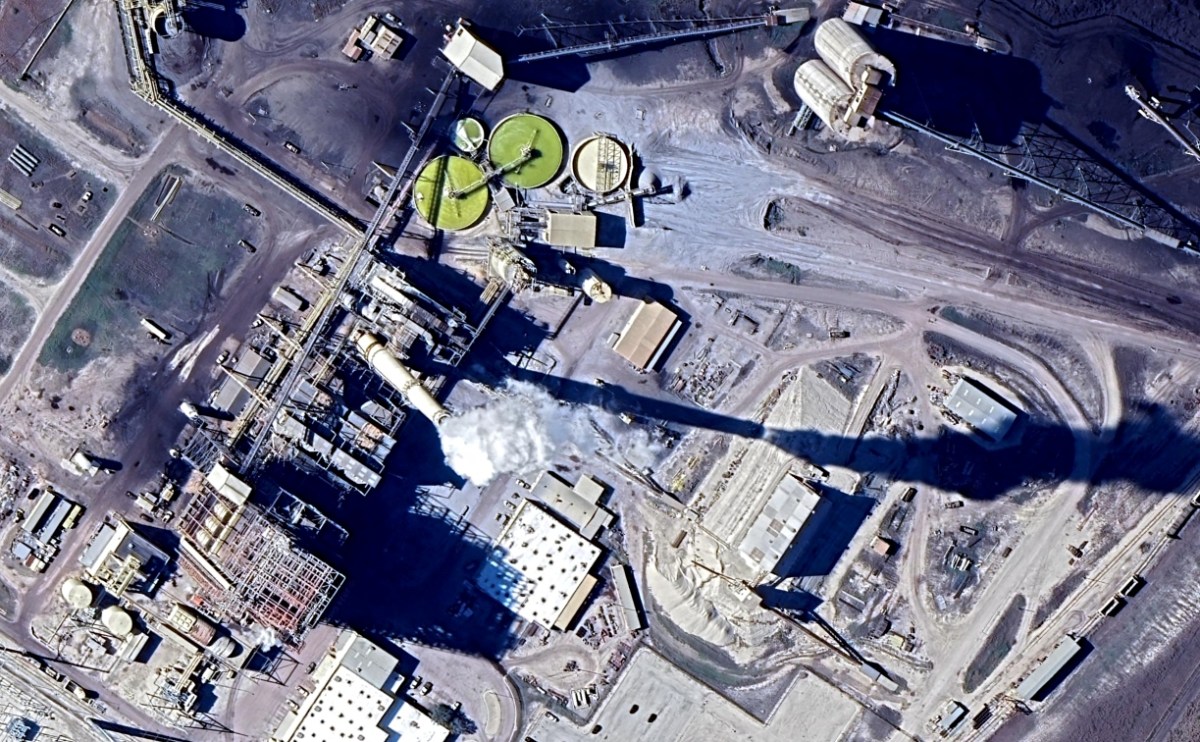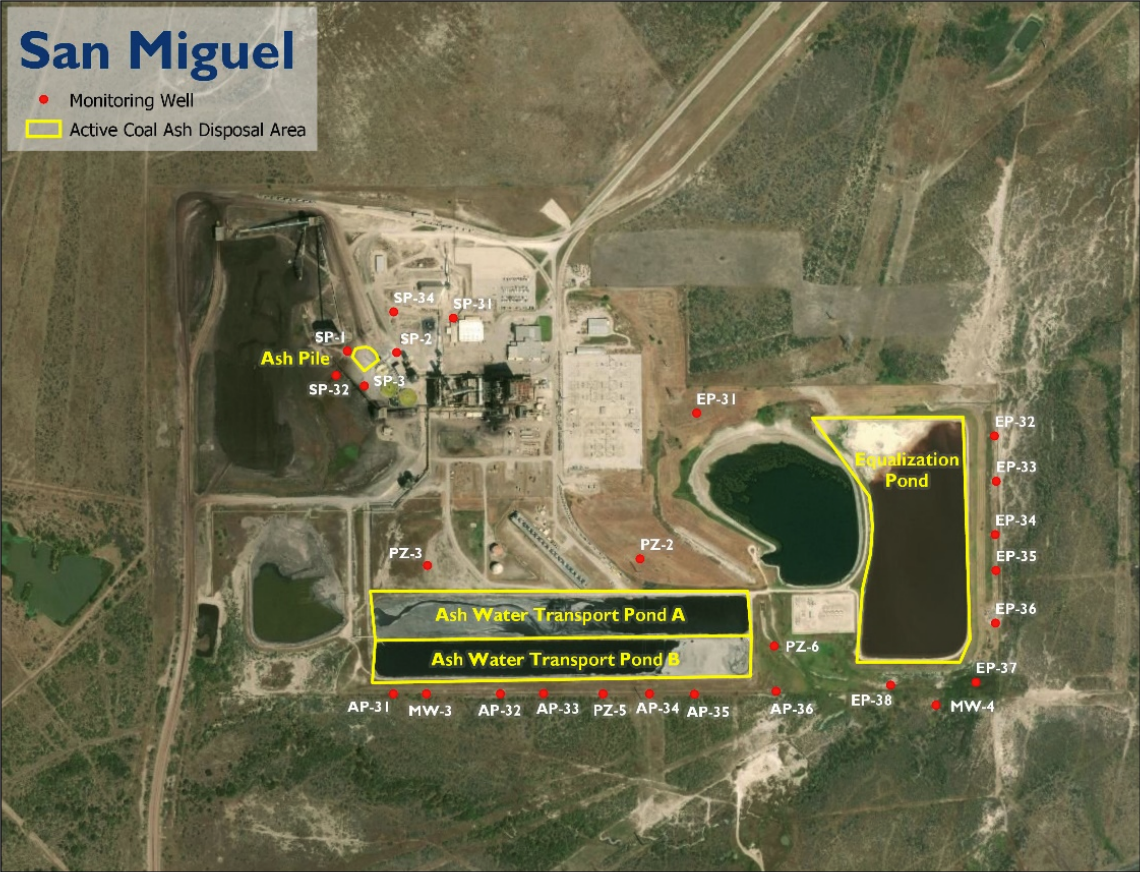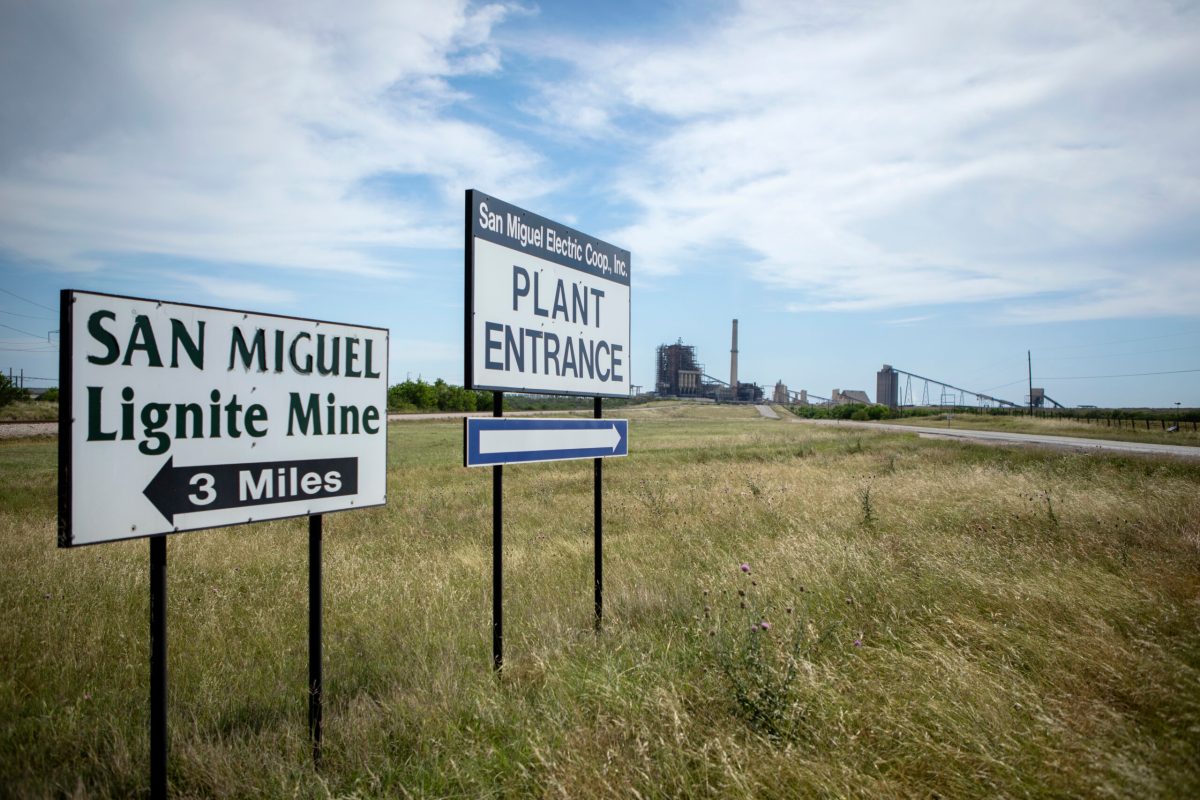Leer esta página en: Español

South Texas landowners and communities have long decried the land and water pollution from the coal plant and adjacent lignite mining operations, one of the most contaminated locations in the state.
James Courtney
Coal power in the United States has been convulsing through decades of power plant closures as the costs of generating electricity from lower carbon sources and fracked gas have rapidly fallen. But, a small coal plant south of San Antonio burning the dirtiest form of coal mined at an adjacent strip mine has continued to chug along—despite a track record of poisoning the air and fouling area groundwater.
The malingering of what one 2019 report called “the most contaminated coal ash site in Texas” has been made possible in part by former President Trump’s pushing back on Obama-era efforts to arrest the forces of industrially driven climate change. Leaders of the towns and rural county governments surrounding the San Miguel Electric Co-op turned out last year to contest the expansion of the plant’s coal mine at the state level. However, the commissioners of the Texas Railroad Commission—members whose campaigns are heavily funded by fossil fuel interests—overwhelmed local resistance.
But a suite of new federal rules from the U.S. EPA could finally force the San Miguel operation to close. That is, if they can survive legal challenge and possible overturning under a new administration in the White House.
In late April, the Biden Administration announced four federal rules that look to address air and water pollution—both recent and legacy waste accumulated over many decades—associated with power plant operations. The rules are proof of “the Biden-Harris Administration’s vision to tackle climate change and to protect all communities from pollution in our air, water, and in our neighborhoods,” said EPA Administrator Michael S. Regan. And they’ve been well-received by leaders, community members, and environmental organizers alike.
“The San Miguel plant and its lignite mine have harmed our community and land for many years,” McMullen County Judge James Teal said in a statement distributed by the Sierra Club, an national environmental advocacy organization. “Neighbors are dealing with the operation’s dirty coal ash ponds and terrible practice of carrying uncovered loads of lignite ash across important waterways.”

The plant burns lignite, a low-grade, high-moisture coal that Texas produces in greater abundance than any other state except North Dakota. The problem with lignite is that it is both low in efficiency, requiring more tonnage per energy unit produced than standard coals (bituminous and subbituminous), and high in pollutants like mercury, arsenic, and other toxic heavy metals. So, if coal is the worst polluter among the major energy source that would make lignite the worst of the worst.
The San Miguel operation, one of the worst mercury-polluting power plants in the U.S., recently had its abuses highlighted when the state regulators approved it for a 12,000-acre lignite mining expansion despite massive local consensus against it. Concerns over pollutants entering Choke Canyon Lake, which provides drinking water to the region, even prompted official county resolutions against the expansion that were previously published by Inside Climate News. At every stage of the energy production process, from mining and transporting lignite to uncontrolled air emissions and toxic ash that result from burning coal, detractors have said that the San Miguel plant has failed to safeguard the well-being of the land or communities it serves.
San Miguel has been listed among the worst emitters of air-borne mercury in the United States.
Coal ash heaps in a landfill and two unlined ponds are another hazardous vector of environmental and potential public health spoilage. A 2023 report on coal ash pollution in Texas by EarthJustice, a nonprofit organization dedicated to environmental law, lists a slurry of pollutants connected to the site. This matters, as the report author’s write, because coal ash contains hazardous pollutants that have been linked to “cancer, heart and thyroid disease, reproductive failure, and neurological harm.”
Specifically, water samples from on-site monitoring wells at San Miguel showed various toxic byproducts of coal power production at many times federal limits:
Arsenic (x8), Beryllium (x127), Boron (x41), Cadmium (x114), Cobalt (x488), Fluoride (x2), Lithium (x90), Mercury (x3), Radium 226+228 (x6), Selenium (x8), Sulfate (x20), Thallium (x4)

The Details
Here is a rundown of the new EPA rules, with attention to their impacts on the San Miguel operation:
- Mercury and Air Toxics Standards (MATS): First introduced in 2012, these standards must, according to the Clean Air Act, be updated to account for the latest technology and data. The MATS have already reduced mercury emissions from power plants by 70% between 2010 and 2020. This update is most noteworthy in this context because it closes a loophole which had previously exempted lignite plants like the San Miguel plant from compliance.
- Coal Combustion Residuals Rule (CCR): This rule requires tighter standards around the movement and disposal of coal ash, including how coal ash ponds are contained, maintained, and monitored.
- Carbon Pollution Standards (CPS): Under section 111 of the Clean Air Act, these standards represent a first-ever set of federal limitations placed on carbon dioxide emissions from existing power plants.
- Effluent Limitations Guidelines (ELG): This set of updated standards bolsters existing safeguards on toxic wastewater discharged by coal-fired power plants via readily available control technologies. One of the many concerns with San Miguel’s operations has been the lack of proper attention paid to wastewater and legacy ponds.
Mayor Felipe Martinez of Three Rivers called the new rules “good news for the kids, the workers, and the families in Three Rivers.”
The rules appear capable of making a difference in the health of area ecosystems and communities, while indirectly incentivizing the production of energy through cleaner and more efficient means. However, as with most EPA rules of any consequence, some or all of these rules are likely to be challenged in court by power plants and states alike. In fact, Texas has already joined other states in legally challenging both the MATS and CPS.
Nevertheless, there is reason for optimism. Josh Smith, an attorney for Sierra Club’s Beyond Coal campaign, told Deceleration that the ideal is to see the rules upheld by courts and to avoid the staying of any stipulations therein. He noted that while it is historically unusual for judges to grant stays on EPA rules but that lately “courts have been more receptive to staying implementation of rules until litigation is complete.”
Smith cited a 2015 rule that should have required San Miguel to reduce its emissions already. However, that rule has been stayed and is still in litigation almost 10 years later.

Since the MATS is an extension of the 2012 rule that the supreme court upheld, Smith is optimistic about its sticking power. He also noted that this rule is self-implementing and will need to be met within three years, with no real requirements from the state.
“It seems like, in the last couple of years, all bets are off in terms of what precedent does or does not mean,” Smith said, “but, given that the Supreme Court has previously upheld a virtually identical kind of rule, I do think [the MATS] will be upheld in some form.”
Smith said the carbon emissions rule may be in for a tougher battle, but noted that the EPA made every effort to design it to fit within the parameters indicated by the Supreme Court’s 2022 ruling against the Clean Power Plan (CPP).
The Supreme Court struck down the CPP, at least in part, because it argued that the EPA had no authority to federally regulate emissions by incentivizing power plants to pursue “generation-shifting” (that is, buying or investing in wind farms or solar installations, or purchasing emission credits as part of a cap-and-trade regime) in such a way that could practically force a massive move away from coal.

This new rule places the onus directly on power plants, requiring them to reduce carbon emissions by using proven technologies to capture and sequester, by shifting to natural gas generation, or by shutting down.
“An objective court should uphold it,” Smith said.
Understanding costs is perhaps the best way to understand the contest over San Miguel and other polluting power plants. Historically, outfits like the San Miguel plant stay financially viable even when the market begins to challenge the cost effectiveness of burning coal by continuing to pass on the so-called “external costs” of dirty power production to the public in the form of harms to the public health (heart attacks, death, harms to developing fetuses) and environmental degradation impacting communities today and in the future.
One way or another, Smith believes, these costs will come back on the plant, whether it be through these exact rules or others yet to be written.
-30-
James Courtney is a freelance journalist in San Antonio with particular interests in arts and culture, social justice, and environmental issues. He also is a poet, a teacher, and a proud girl dad.
Additional reporting by Greg Harman.

Like What You’re Seeing? Become a patron for as little as $1 per month. Explore ways to support our mission. Sign up for our newsletter (for nothing!). Subscribe to our podcast at iTunes. Share this story with others.
